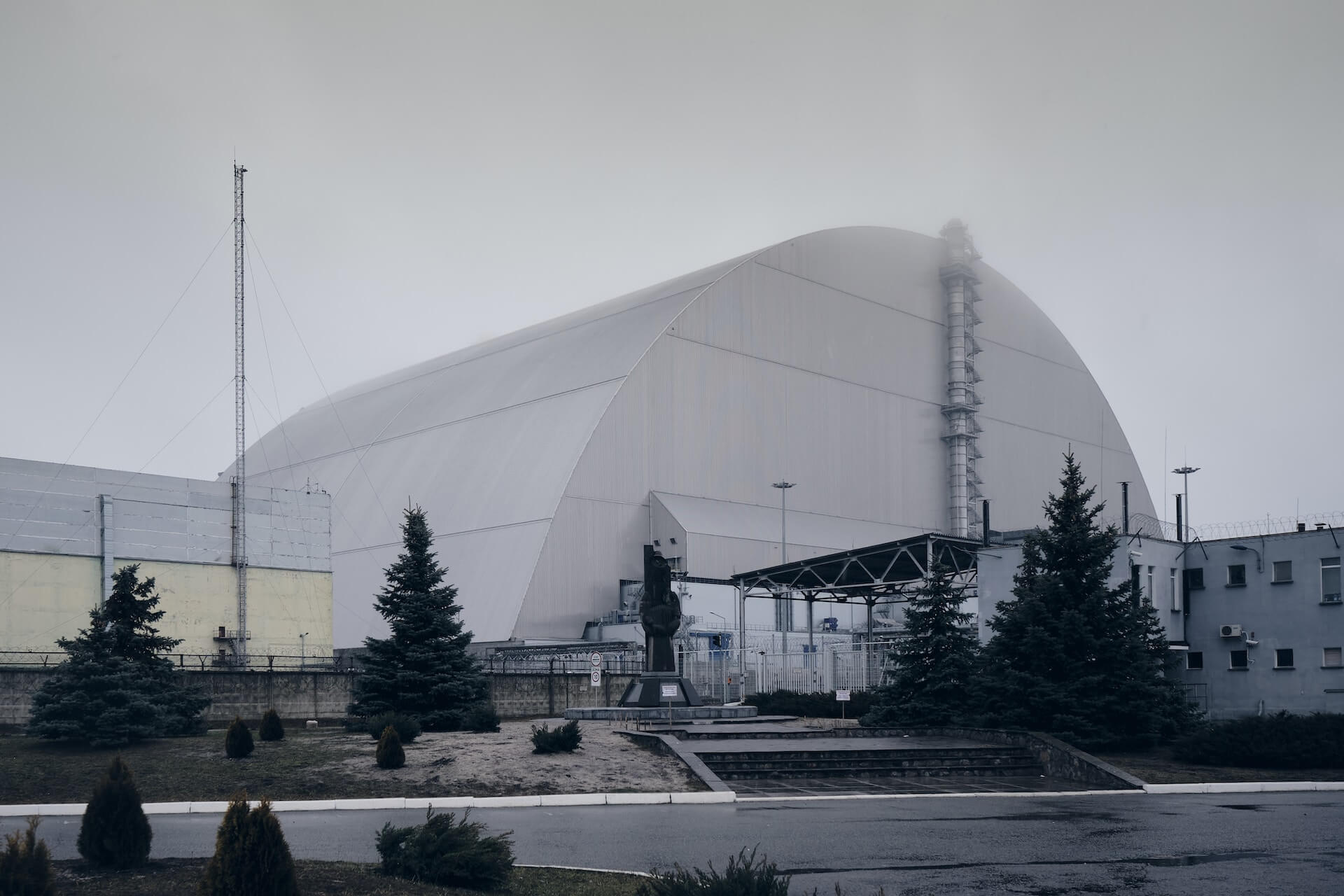
How Many Nuclear Power Plants Are in the World?
We are reader-supported. When you buy through links on our site, we may earn affiliate commission.
Renewable energy is growing worldwide, with many countries implementing clean power sources as much as possible. Solar and wind power have become more valuable in combating climate change, but what about nuclear power? This energy source has some disadvantages but is growing worldwide. How many nuclear power plants are in the world? What can you expect in the future? Here’s a guide on nuclear energy and its spread around the globe.
How Many Nuclear Power Plants Are in the World?

Nuclear power has risen since the 1950s once countries figured out how to harness it. After World War II, times became tense because of the threat of nuclear war. These worrisome moments peaked in the early 1960s with the Cuban Missile Crisis but eventually tampered down.
As the 20th century progressed, more countries began to use nuclear for good rather than harm. The world reached 300 gigawatts of nuclear energy by 1990 and has only climbed to 391.7 GWs in 2023. So, how many nuclear power plants are in the world today?
Currently, the world has 436 operable nuclear reactors spanning 32 countries — most of which are in North America, Asia and Europe. It’s worth noting that the top 10 countries own 364 (or about 83.4%) of the world’s nuclear power reactors. These 10 countries include:
- The United States
- France
- China
- Russia
- Japan
- South Korea
- India
- Canada
- Ukraine
- The United Kingdom
What Has Slowed Nuclear Power Progress?
The world’s nuclear supply hasn’t grown as much as expected since 1990. The answer to how many nuclear power plants are in the world would be much higher if not for a few incidents in the last half-century. Here are a few tragic events stemming from failed nuclear power plants.
Chernobyl

When asked about nuclear disasters, the first incident that comes to mind for many is Chernobyl. This incident occurred in April 1986 when a reactor blew up at Chernobyl’s nuclear plant when it was still part of the USSR. The explosion forced nearly a million people to leave the area and cost about $235 billion in today’s money.
Chernobyl is uninhabitable to this day and won’t be for a long time. Experts say Chernobyl’s exclusion zone will take at least 3,000 years to recover, while other scientists say it won’t be safe for at least 20,000 years.
After the Chernobyl disaster, public opinion on nuclear power shifted negatively, with many fearful of the energy source. Consequently, the number of power plants built in the 1990s and early 2000s slowed.
Three-Mile Island
While the Chernobyl nuclear disaster might be the most prominent, another incident preceded it by seven years. In fact, the Three-Mile Island Incident occurred in the United States in 1979 near Harrisburg, Pennsylvania. More specifically, it happened in Londonderry Township on the Susquehanna River.
The Three-Mile Island accident is the worst nuclear power plant incident in American history, with ramifications felt to this day. Inside the facility, the cooling system malfunctioned and caused a reactor to melt. Additionally, a pilot-operated relief valve failed, allowing much water to leave the coolant loop. According to the Idaho National Laboratory, it took 14 years and $1 billion to clean the mess at Three-Mile Island.
Fukushima
The most recent nuclear accident occurred in Ōkuma, Fukushima, Japan, at the Fukushima Daiichi nuclear power plant in March 2011. Only one person died from the incident, but the disaster required over 2,200 people to evacuate the city. Others developed cancer or suffered from physical injuries due to explosions and radiation burns.
The Fukushima nuclear accident differed from the previous two because no mechanical error caused it. Instead, the Tōhoku earthquake and tsunami was the culprit, considering its 9.0 magnitude and 133-foot high waves. The massive storm compromised Fukushima’s energy grid and caused nearly all the generators to fail. Nothing could cool the reactors, leading to nuclear waste spilling outside the facility.
The facility operators couldn’t do much about the earthquake and tsunami, but a Japanese commission determined they could have assessed the risk better and protected employees. Before the 2011 incident, numerous studies suggested an earthquake and subsequent tsunami hitting the nuclear power plant was possible.
Are Countries Building More Nuclear Power Plants?
Nuclear power is back on the rise as more countries look to renewable energy as a replacement for fossil fuels. People worldwide get about 10% of their energy from nuclear power, which varies depending on location. For instance, France, Sweden, and Finland produce a lot of nuclear energy, whereas Iceland and Norway are less reliant.
Despite past incidents, nations are looking ahead with new plants. How many nuclear plants are countries building in the world? The World Nuclear Association reports that 17 countries are constructing 60 plants worldwide.
Once complete, more countries will join the list of nuclear power plants worldwide. For example, Bangladesh, South Korea and Turkey are constructing their first power plants, with most expected to finish construction by 2026.
What about the United States? America has 93 active nuclear reactors, but one more is in the works. The U.S. is building its 94th nuclear plant near Waynesboro, Georgia, just south of August and the South Carolina border. The Vogtle Unit 3 plant has already started operations, but Vogtle 4 is still under construction.
Each nuclear power plant in the United States has a set life. The Energy Information Administration (EIA) says every facility gets a 40-year license before applying for a renewal. Nuclear power facilities can get a 20-year extension and a second 20-year extension to last for 80 total years. No facility has reached the 80-year mark, as the oldest one in the country has been in New York since 1969.
How Do People View Nuclear Power Nowadays?
Sustainability has become a more significant priority in daily life, and wounds from the past have started to heal. Public opinion on nuclear power has grown more favorably as time passes and the public recovers from Chernobyl and Three-Mile Island.
Nuclear power in the U.S. might be smaller than its presence in France or other countries, but public opinion has positively shifted. A 2023 Pew Research Center Survey indicates 57% of people favor nuclear power plants for electricity generation. This result is a stark increase from 2020 when 43% of Americans supported it. As climate change becomes more apparent, finding ways to be proactive with renewable energy will be crucial.
How Many Nuclear Power Plants Are in the World for Power Production?
The planet has over 430 nuclear power plants, with 60 more on the way. By the decade’s end, the world will have nearly 500 active reactors for energy generation. A pair of plants in Japan and Ukraine have seen suspended production for various reasons.
Increasing nuclear power generation and decreasing reliance on fossil fuels is critical for the planet’s health. Will nuclear power be a fruitful strategy, or will solar and wind become more prominent this century?
Share on
Like what you read? Join other Environment.co readers!
Get the latest updates on our planet by subscribing to the Environment.co newsletter!
About the author
Jane Marsh
Starting from an early age, Jane Marsh loved all animals and became a budding environmentalist. Now, Jane works as the Editor-in-Chief of Environment.co where she covers topics related to climate policy, renewable energy, the food industry, and more.





